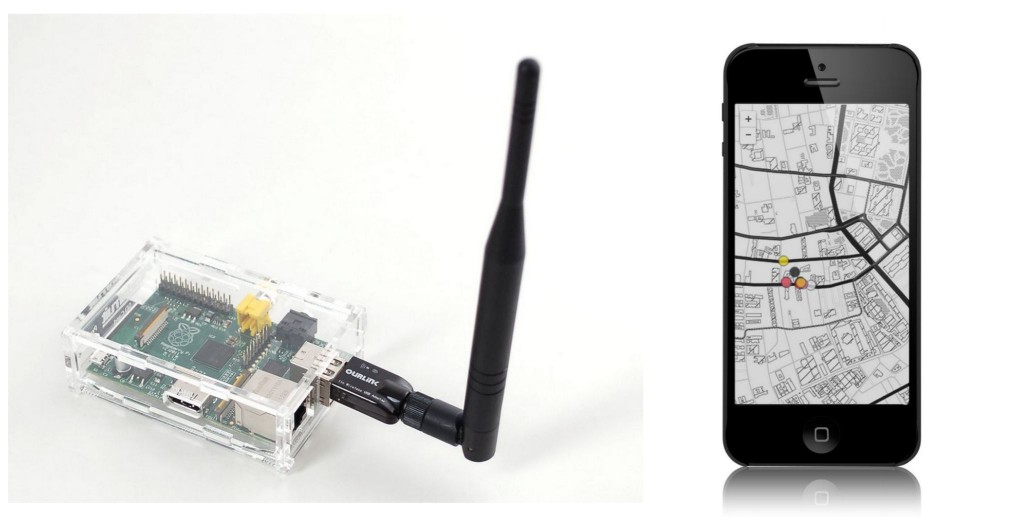
Counter Mapping is an alternative to Google’s ubiquitous representation of the world; a pirate WiFi map server developed as part of the MuseumsQuartier Vienna exhibition Tactical Space Lab to offer a disrupted mobile map experience (subverting the mobile navigation aesethetic and interface). They allow the same sort of experience as using google maps – pinch zoom, swipe navigation, dynamically updating map tiles – but present the artist’s own maps. These could be anything from fairly conventional representations, to crayon drawn scrawls or biro-annotated sketches. In Tactical Space Lab the map served up the results of Harle’s performative mapping experiments, which emphasized an embodied ‘making sense’ in the practice of cartography, and which were developed using a flight-case housed “mobile research platform” in various urban locales in Europe: Paris, Berlin, Vienna.
Counter Mapping is hosted via Raspberry Pi single-board computers (as pictured), which can be made weather-proof, and can even be run via battery or solar if mains power is impractical. With an affordable 5dbi antenna/WiFi interface they have a range of about 50 metres, and when installed in an area effectively are ‘visible’ and usable within this range. The cost of each device with enclosure, power adaptor, WiFi, and appropriate weatherproofing is less than AU$150.
The devices show up as an open WiFi network (many phones/devices will give a notification that it has found an open WiFi network). They could be set up as a number of spatially overlapping Wifi-networks each with a different name corresponding to themes, perspective, or artists. Using HTML5 and javascript and providing multiple formats of media, the devices can host maps, text, video, and audio content. Most of the processing is done on the audiences’ devices, so it scales well: there isn’t significantly more strain on the Raspberry Pi device as more users connect to it. Users choosing to connect to the open WiFi (no password needed), are automatically forwarded to the WiFi’s landing page. In the Autonomous Digital Terrotories work installed at Kandos, NSW, this was the fictional Digital Territories’ consular website. In the MuseumsQuartier installation for the Tactical Space Lab show, the landing page was the map itself:
A how-to will be developed shortly on how to construct your own map, and with tools for creating your own map tiles. We plan to hold workshops on how to create counter maps that will include:
The workshop would be held over two day sessions.
For enquiries, use the contact form.